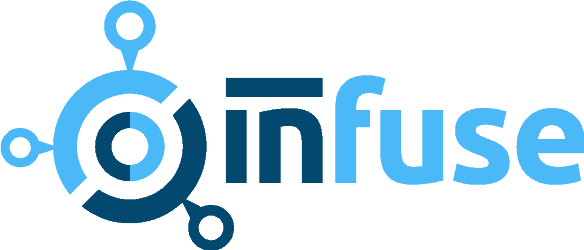In the new era of health care, interactive patient education is vital to make patients understand their health easier, more engaging, and highly personalized web. Imagine learning about your health through captivating videos.
That’s the ideology behind interactive patient education content creation. The clearer the understanding of a disease, the more likely an individual is to follow necessary treatment procedures. Knowing what to expect during a medical procedure is important. Therefore, interactive patient education boosts patient engagement.
Studies show that patients who used these tools had a 15% better adherence to their treatment plans. This read explores how interactive content empowers patients’ understanding, ultimately leading to better health outcomes.
Overview of Interactive Patient Education and its Benefits.
Using cutting-edge tools, we can create interactive modules that break down complex medical terminology into bite-sized, understandable pieces. It transforms the way patients receive and process health information, making it more accessible and easily understandable.
For instance, animated videos can illustrate how medications work in the body. This improves patient understanding. By using quizzes and interactive elements, patients stay more engaged. This active participation helps reinforce learning and retention.
Personalized modules address individual patient needs and conditions, ensuring relevant and effective education. For example, cardiac rehab patients at the University of Pittsburgh Medical Centre benefitted from customized virtual simulations, reducing readmissions by 30%.
Studies consistently show that interactive education leads to better management of chronic conditions and overall patient satisfaction. The future of healthcare is increasingly digital and interactive. As technology advances, the possibility for even more engaging and effective patient education grows.
The Need for Interactive Patient Education
In modern healthcare, the demand for interactive patient education is increasing due to its ability to simplify complex medical information. In recent days, patients have sought accessible and understandable health information that empowers them to make informed decisions.
Complex Medical Information – Healthcare information can be difficult to understand. For instance, understanding how a chronic disease progresses or how a specific treatment works can be daunting without proper guidance. Interactive tools simplify complex concepts, making them easier to understand.
Health Literacy – With only 12% of U.S. adults having proficient health literacy, many patients often get confused by explanations. They struggle with written materials or forget what they’ve been told after appointments. Video content can help in these areas. Such content can be emailed to patients or made available on practice websites or patient portals, allowing caregivers or families to assist as well.
Personalization – Each patient has unique needs and learning preferences. Some will prefer visual learning, and some may go with hands-on learning. This ensures that patients receive information in a way that resonates with them most.
Accessibility – Digital platforms make educational content available anytime, anywhere. For a patient recovering from hip replacement surgery, digital platforms offer access to interactive modules and videos demonstrating post-operative exercises and rehabilitation techniques. This accessibility allows them to progress in their recovery journey without the need for frequent travel to healthcare facilities.
Types of Interactive Patient Education Content
Various tools and technologies are used to implement interactive patient education content. These play a crucial role in enhancing patient understanding and adherence to treatment plans.
1. 3D Animations
3D animations provide detailed visual representations of medical conditions, procedures, and anatomy. This visual approach helps explain medical information, reduce anxiety, and improve patient understanding.
Consider a cardiac patient learning about coronary artery bypass graft (CABG) surgery. A 3D animation can clearly show how blocked arteries are bypassed with new vessels, demonstrating the procedure step-by-step. This visual representation helps patients grasp the surgical process and its implications more effectively than traditional text-based explanations.
2. Virtual Reality (VR)
Virtual reality offers an immersive experience that can significantly improve patient education. By simulating real-life scenarios, VR allows patients to explore and understand their conditions in a highly engaging manner.
For example, VR can take patients on a journey through the human body, showing how diseases affect different organs or demonstrating the steps of a surgical procedure from the surgeon’s perspective.
This immersive experience helps patients better grasp the implications of their health conditions. VR is especially beneficial in preparing patients for surgeries or complex treatments, as it provides a realistic preview of what to expect. So thereby it reduces fear and uncertainty.
3. eLearning Modules
eLearning modules are extensive educational resources that combine various multimedia elements, including text, images, videos, quizzes, and interactive activities. These modules are designed to provide in-depth information about specific health topics.
eLearning modules can educate patients about managing chronic conditions such as diabetes, hypertension, or asthma. They can provide information on medication adherence, dietary guidelines, and symptom management strategies.
Modules can promote preventive healthcare practices such as vaccinations, screenings, and lifestyle modifications. Patients can learn about risk factors, early detection methods, and preventive measures to maintain their health. Patients can interact with the content, reinforcing their understanding and retention of critical health information.
4. Best Practices for Creating Interactive Content
Understand patient Needs. Conduct research to understand the demographics, health literacy levels, and preferences of your target audience. Assess patient understanding and reinforce key concepts with Interactive Quizzes.
Keep Content Clear and Concise. Use visuals, animations, and interactive elements to enhance understanding. Provide Virtual Tours of procedural walkthroughs.
Design content that is accessible across different devices and platforms. Consider the needs of patients with disabilities or those who require translation services.
Personalise content based on individual patient profiles, treatment plans, and specific health concerns to enhance relevance and engagement. Simulate real-life medical scenarios for decision-making practice.
Future advancements in Virtual Reality (VR) and Augmented Reality (AR) are poised to revolutionize interactive patient education by offering immersive, real-life simulations of medical procedures and health scenarios.
Integrating Artificial Intelligence (AI) and Machine Learning aids in delivering more personalized recommendations for treatment plans and health management. Telehealth and Remote Monitoring are expected to expand and improve connectivity for remote patient education and follow-up care.
Wrapping up
Interactive patient education content creation represents a major advancement in modern healthcare. Utilizing 3D animations, eLearning modules, and emerging technologies like VR and AR, healthcare providers can enhance patient engagement, and health literacy, and foster better health outcomes.
By continuing to innovate and integrate new technologies, we can ensure that patient education remains effective, relevant, and empowering. Together, we will advance towards a future where every patient has the knowledge and tools to thrive in their healthcare journey.

